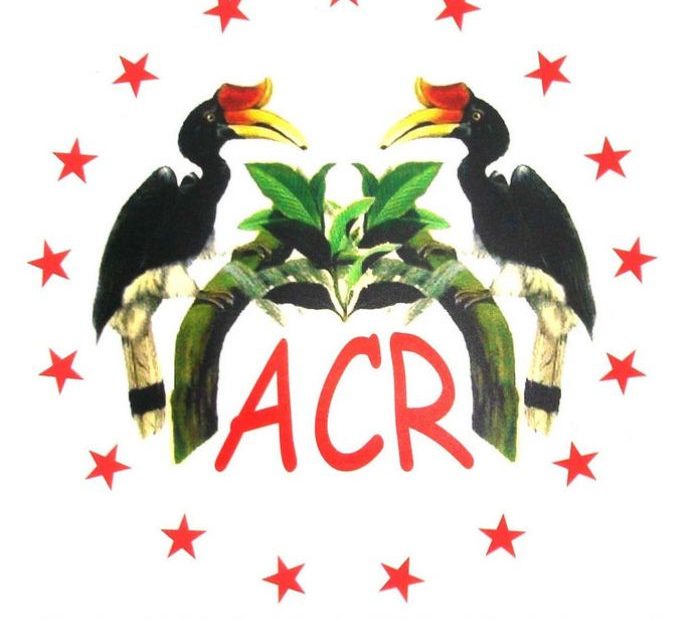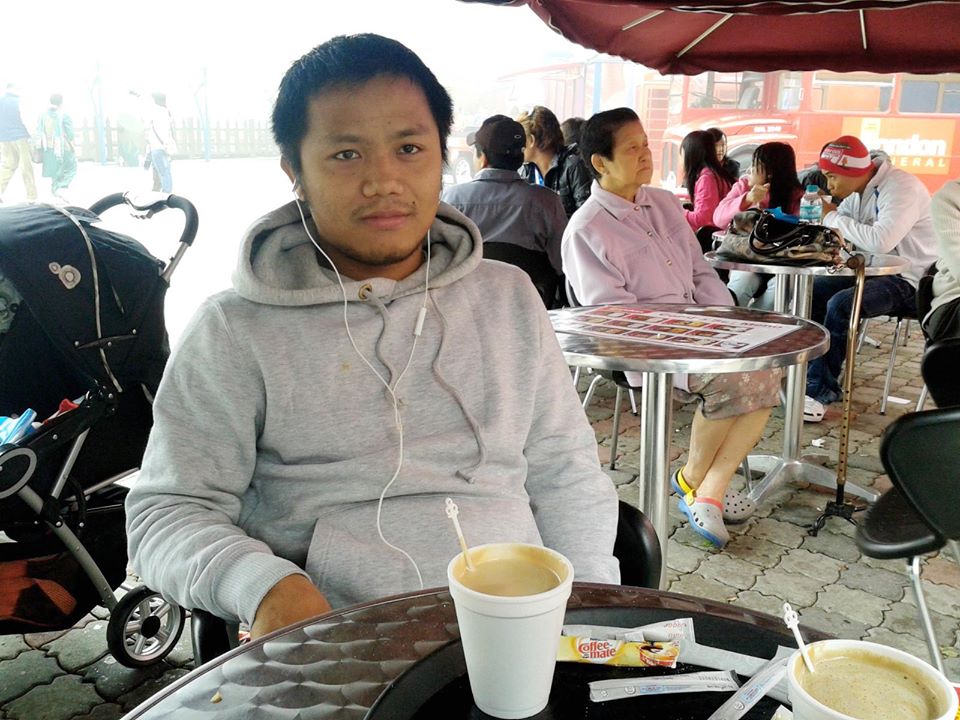

Population of Chin refugees cannot be ignored: Interview with Salai Laitha
30 August 2016 – Salai Laitha is the chairperson of the Alliance of Chin Refugees, one of the umbrella organizations for community-based refugee groups, in Malaysia. While he was studying at the University of Delhi, he was an active leading member of the Chin Students’ Union (Delhi). He had also worked for the UNHCR in Malaysia from 2012 to 2014.
In this interview conducted by Salai SH Lian, Laitha talks about the current situation of Chin refugees in Malaysia, the UNHCR and what the new government, both Union and State, should do in order to help refugees make the right decision for their future.
Question: Give us brief background information on the situation of Chin refugees in Malaysia.
Salai Laitha: As of the end of June 2016, 150,700 persons are registered with the UNHCR Malaysia, of which 42,480 are Chins, with about 9,000 below the age of 18 years. Less than 10,000 Chins are not registered with the UNHCR. Chin refugees have sought asylum in Malaysia since 1988. Nevertheless, they were only accepted as refugees from 2001 onwards. As Malaysia is not a state party to the 1951 Refugee Convention and the 1957 Protocol, refugees are treated as illegal immigrants. Therefore, they have no right to work legally, are not able to access public education, and have to pay hospital expenses using the foreigners’ rate.
Citing ‘humanitarian grounds’, the Malaysian government allows refugees to work under the 3D employment environment (dangerous, dirty and demanding). Many Chins are working in restaurants, farming, plantation, construction, and manufacturing, as well as salespersons in the retail industry. They can be arrested anytime and put in immigration detention centers even if they are registered with the UNHCR. We estimate that there are more than 300 Chins being detained in eleven different immigration detention centers across Peninsular Malaysia.
Due to these challenges, many innocent lives have been lost at workplaces or in detention centers. In order to cope with the situation, some young people have also resorted to using drugs and in extreme cases, turning to prostitution as a means of survival.
Question: How are refugees trying to cope with these difficult situations?
Salai Laitha: Refugee community organizations such as the Alliance of Chin Refugees (ACR), Chin Refugee Committee (CRC), and others play a vital role in responding to these problems. Various Chin ethnic groups managed to run their own community offices, learning centers, free clinics, and provide vocational training. There are 37 Chin community learning centers for more than 2,000 children. Around 70 Chin Churches are providing spiritual and moral support as well as supporting the work of refugees’ communities. Adults and many minors are working as they need to support their families, also partially due to the fact that young people have no opportunities to access higher education.
Question: Currently, what kind of support do Chin refugees receive from the UNHCR?
Salai Laitha: I would say they do not receive anything at all. The UNHCR’s role is simply to issue their ID cards for protection purposes. It remains for refugees to find their own livelihood in order to survive in Malaysia. In the past, the UNHCR used to provide funds for educational programs and financial aid for refugees in serious medical conditions. This has stopped since the beginning of 2015. Therefore, the Chin community is trying their best to sustain ongoing activities with the limited resources they have and with donation sourced from local and expatriate communities.
Question: As our country (Burma) is in the midst of a democratic transition, with the NLD leading the government, we understand that the outlook for refugees in Malaysia and India is not very good in term of resettlement to the third countries. What is your opinion on this?
Salai Laitha: Yes, I agree that the dramatic political changes in Myanmar have hugely impacted resettlement opportunities to third countries. The drop in resettlement placements for the Chin is also partly due to the priority the UNHCR has given to the conflict in Syria and other parts of the world. There are more than 59.5 million people forced from home globally – out of this number, nearly 20 million are refugees, of which just 1 per cent stands a chance of being resettled. I would say we are lucky that more than 60,000 Chins have been able to resettle to different parts of the world in the last decade under the UNHCR programs.
In terms of resettlement quotas, it mainly depends on the policies of major receiving countries such as the US, Australia, and Canada. I think only a few thousand refugees will be able to resettle from Malaysia in the coming five years, with priority given to family reunification, individuals registered before the cut-off date of 17 Aug 2010, and the most vulnerable individuals. Likewise, only a few hundred Chins will resettle from India. The majority of them will remain in Malaysia or India for a couple of years until they are ready to return to their homeland voluntarily.
Question: What is UNHCR’s current durable solution policy for Chin refugees?
Salai Laitha: The UNHCR in Malaysia constantly monitors political developments in Burma/Myanmar as well as the refugee movements. As resettlement opportunities are shrinking, the UNHCR is attempting to negotiate with the Malaysian government to introduce a labour migration scheme, which would give refugees the right to work legally in Malaysia – however, in my opinion, the chances of this materializing are extremely low. The UNHCR has also acknowledged that a few Chins are going back to Myanmar by themselves, which has led them to introduce a voluntary repatriation program – however, again, the take-up rate has been very low.
Question: Why do you think Chin refugees are not willing to return home at the current stage?
Salai Laitha: I think many Chin refugees have no confidence over current political changes in Burma/Myanmar. For many, the time has not come yet to return home. This will hugely depend not only on political development, especially the peace process, but also on other development including economic and social sectors. Many areas of Chin State are still lacking in basic human needs such as food, shelter and clothing, as well as basic infrastructure (transportation and electricity supply), schools, hospitals, and livelihood opportunities. Most importantly, I think many refugees fear that Burma/Myanmar is still in the same situation as the time they left, as military battalions have not withdrawn from villages and towns.
Question: Former President U Thein Sein, during his administration, invited Burmese refugees in Malaysia and other countries to return to Burma. Do you know any refugees who actually came back to Burma?
Salai Laitha: It is true that a few Burmese prominent leaders and media organizations in exiles have returned to Burma/Myanmar after the new quasi-democracy came into power. They are the ones who have money, are educated and possess skills that will help them to rebuild their lives in Burma/Myanmar. Apart from those, returnees mainly consist of political and human activists, or city dwellers whose homes were not affected by the mass human rights violations that took place in the ethnic states. At the same time, you may also hear that more than 10,000 thousand Karen refugees from the nine Thailand border camps have made it home. This was made possible due to the efforts of the Thai Border Consortium (TBC), which facilitated the government-to-government agreement as well as strong support from KNU for Karen refugee returnees. However, it must be noted that Thailand’s context is extremely different from the situation in Malaysia –refugees in Thailand live in organized refugee camps, as opposed to Malaysia’s urban context. As such, refugees in Thailand rely on continuous donor support to keep the camps running. However, as Burma/Myanmar has gradually opened up, donor flows to the camps are drying up as aid is gradually being redirected to Myanmar itself to aid country development. This has created a scenario where refugees in Thailand are struggling for survival, leaving them with limited options but to come home.
We know that a few Chin refugees have returned. While a few of those are individuals who have already managed to obtain citizenship from third countries, most are leaving because of the lack of physical security and extremely difficult living situation for refugees in Malaysia.
Others than those exceptions, the majority of Chin refugees have opted to stay put for now, with the main reason being that there isn’t any legal framework in Burma/Myanmar that guarantees legal protection to returnees upon repatriation.
Question: The present NLD government discusses refugee issues. What would you say if they asked you to go back?
Salai Laitha: As far as my knowledge is concerned, I haven’t heard any news that the NLD will repatriate refugees from Malaysia. I think that they might currently be focusing on getting skilled Burmese living in exile to return home and help to rebuild the country with the skills and expertise they possess. If they ask refugees to return, we will have various questions for the NLD government: How much can you guarantee that the ceasefire agreement with the ethnic armed groups will be sustainable? Have you solved IDPs issues sustainably, including that of flood victims? Will we have legal security, physical security and material security on post-return? Would refugees get back their rights, land, and properties that they lost before leaving Burma/Myanmar?
Question: What kind of assistance do you receive from the Myanmar Embassy in Kuala Lumpur?
Salai Laitha: There is no official relationship between refugee communities and the Myanmar embassy. We have, however, experienced a positive administration change within the Myanmar embassy as they are helping to release detainees in immigration camps as well as issuing them a Certificate of Identity (CI) to officially deport them back home. However, to apply for an IC, you still need to produce a National Registration Card (NRC) and Household Registration (Form 10) to facilitate deportation. Unfortunately, these are very often documents which Chins, who came to Malaysia before the age of 18, and families coming from very remote areas do not possess.
Question: Do you know if there is any relationship between the Myanmar Embassy and the UNHCR’s office in Kuala Lumpur?
Salai Laitha: We were informed that the UNHCR representatives in Malaysia had met twice with the Myanmar ambassador. The UNHCR asked the Embassy to issue legal documents for Chin refugees in order to enable them to put a labor migration scheme in place. However, there was no fruitful outcome, as the decision regarding issuance of legal documents and work permits ultimately rests with the governments of Burma/Myanmar and Malaysia.
Question: What do the Chin State government and the Union government of Burma need to do to encourage more refugees to return?
Salai Laitha: First and foremost, a legal framework for the returnees is required for the long-term protection. The Burma/Myanmar government must co-operate with the Malaysian government, the UNHCR, the IOM, and other relevant agencies when planning for repatriation. One organization should be assigned to conduct assessment studies to identify the needs of individuals and families. This study will provide important information and understanding of how refugees would like to rebuild their own future, whether by going back to their own villages or to a particular allotment. Refugees must be consulted and included throughout the process and before repatriation exercise is conducted. They should also be informed of political developments in Burma/Myanmar so that they can make the right decisions for their future.
Question: What do you think would need to be done to prepare a refugee to return to their home country?
Salai Laitha: Based on the assessment findings, refugees should be equipped with useful skill sets to be able to get jobs or to run their own businesses after returning. The skills to be provided should depend on individual needs and personal interest, as well as the availability of livelihood opportunities in their home places like the Chin State.
Question: Are there any other issues you would like to raise?
Salai Laitha: Finally, I would like to thank for your interest in issues related to Chin refugees in Malaysia. The Chin State government and Chin people around the world cannot ignore the Chin population in Malaysia because they represent about 10 per cent of the entire Chin population from the Chin State. This population cannot be simply overlooked as they wait for their problems to be resolved. As every one of us is well aware, there are new emerging refugee groups that demand immediate international attention – as a result, the interests and focus of international organizations, including the UNHCR, have been diverted to them. More lobbying and advocacy work should also be done to find a feasible durable solution for the affected Chin population – solutions that will effectively safeguard their long term protection and provide self-sufficiency for all the Chin refugees and asylum seekers in Malaysia and India.
Note: This interview was first published in Hakha dialect in the June edition of the Chin Digest magazine this year and is translated into English by Salai SH Lian.





